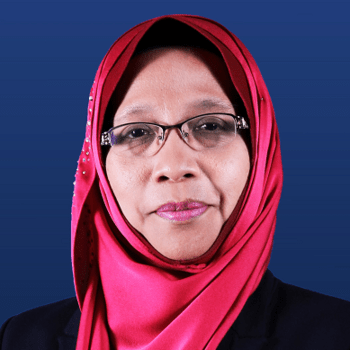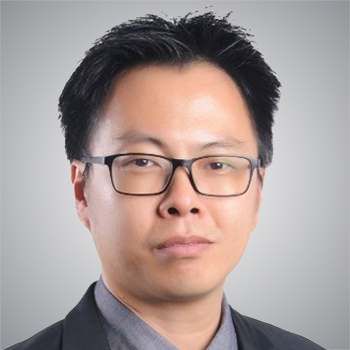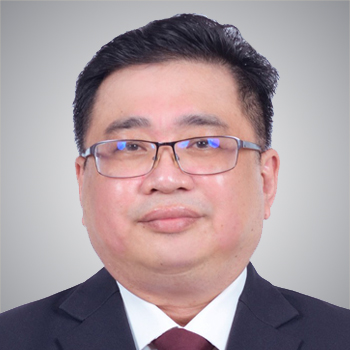
Countries have witnessed a historic development in the digital economy – an economy built on digital technologies since the acceleration of transformation brought by the pandemic. Daily transactions have become increasingly electronic as cashless payment solutions like e-wallets play a significant part in the marketplace. Online operations are leading toward a digital future and are becoming more popular as they enable and support the growth of the digital economy.
In Malaysia, the Digital Economy Blueprint says that by 2025 everyone in the civil service will be able to use computers and 80% of government services will be available online from start to finish. All ministries and agencies will offer ways to pay without cash and 80% of the government will use cloud storage.
The 7th Annual Malaysia OpenGov Leadership Forum 2022, held on 23 June 2022 at Putrajaya Marriott Hotel, convened digital leaders from the Malaysian public sector to explore accelerating digital innovation strategies for sustainable growth.
The Pandemic: A Game Changer

Mohit Sagar, CEO and Editor-in-Chief, OpenGov Asia, kicked off the session with his opening address, emphasising the game-changing role of COVID-19 across the world and particularly in Malaysia.
By accelerating the digital transformation of government operations and business models, as well as encouraging innovation and cooperation between various agencies, Malaysia seeks to increase access to high-quality public services and business.
In addition, the government is looking to digitalise citizen services and solutions for people and the local business sector by engaging and encouraging the private sector. The nation is particularly focussing on the highly strong local ICT sector and local innovators to play an active role in the digital transformation of society.
Speaking of the future of the digital economy in which every nation is impacted by the growth of human knowledge and the advancement of technology, Mohit felt that different types of research are being done on artificial intelligence and different development budgets are being used to get the best outcomes.
“If we want to use AI to make real-time decisions, we still need data, and that data must be stored in the cloud. This is the augmented reality of the future,” Mohit explains.
Big data science and the AI industry are viewed as particularly promising by experts and labour market analysts, who advise workers to consider careers in these fields. The needs of the industry and the importance of this data for forecasting a project’s profitability are related to the sector’s growth.
In closing, Mohit highlighted the importance of hastening the digitisation of governmental services to offer quick access and a better user experience when citizens need them most and investing in digital platforms to build the capacity of the public sector.
Accelerating Digital Economy: Public Sector Perspective

Hanissull Jalis Binti Md Yusof, Director, Application Development Division, Malaysian Administrative Modernisation and Management Planning Unit acknowledges that the pandemic continues to pose significant problems to the world economy, which includes Malaysia. Both the public and private sectors had an impact on everyone, causing upheaval in entire industries. Many daily contacts are now virtual.
“Malaysia to prioritise digitalisation and advanced technology this effort with intensify the digital economy and achieve inclusive development, accelerating R & D and harnessing the potential of advanced technologies,” says Hanissull.
COVID-19 has forced traditional brick-and-mortar businesses to shift their business models online and millions of Malaysians migrated for their e-commerce, entertainment and especially education, “A student’s home internet connection or access to laptops or computers are now prerequisites for the delivery of high-quality education.”
The growth of the digital economy has understandably accelerated in 2020 alone. So the time has come for Malaysia to build the groundwork for its transformation and to ride the wave of digitalisation into an advanced digital economy so that no Malaysian is left behind.
This foundation, she adds, involves developing the essential infrastructure, promoting innovation and determining an ecosystem in the public sector, to help improve the living standards of all Malaysian. They must cooperate and take the essential actions to adapt and cooperate to the new normal as they deal with the digital economy transition.
“Our digital journey won’t be easy, but we must have the courage to move through with this huge step to improve everyone’s quality of life in Malaysia,” concludes Hanissull.
AI and Digital Transformation in Government: Supporting Smarter Investigations

Particularly in the government, artificial intelligence (AI) and digital transformation (DX) can occasionally seem complex or challenging to implement, according to Dr Steve Bennett, Director, Global Government Practice, SAS.
Different countries see AI as a critical defining technology that can bring socio-economic development and growth, opening a wide range of opportunities for a variety of sectors, including government. As a result, leaders and policymakers from many countries are promoting the creation of an inventive and strategic AI ecosystem.
The tax collection department is not the only one using AI for documentation. It can also be applied to other industries where officials and staff are tired of recording and documenting information processes. During the pandemic, it also became an important tool for tracking and tracing cases.
“AI may be used to detect money laundering operations so that law enforcement can intervene, and effective machine learning can aid in fraud detection,” says Dr Steve, citing the example of the state of Victoria in Australia for Public safety and security using AI.
The Victorian State government is eager to capitalise on the transformative potential of AI technologies such as voice, image, and facial recognition, robotics and autonomous systems augmented and virtual reality and machine learning.
According to reports, Australian police are using a private, unaccountable facial recognition service that combines machine learning and broad data-gathering practices to identify members of the public from online photographs.
Victoria police use AI/ML to implement effective policing and eventually close crime investigations at a much faster pace and can automatically build the connections of pieces of evidence.
AI and machine learning are delivering valuable solutions for the public and private sectors to screen large amounts of live data. AI is also often viewed and marketed as a solution for eradicating human bias, despite the reality that AI algorithms and dataset production can perpetuate human bias and are therefore not error- or value-free.
For law enforcement, one of the most important skills that is not keeping up with the pace of tech innovation is the ability to screen, analyse and draw conclusions from the ever-growing amount of data while respecting the limits on access to and use of personal information in the democratic system.
To promote citizen involvement and accountability, the government will need to adapt the way it operates due to the rapid advancement of digital technology. This can be accomplished by adopting innovative, intelligent technology to become more resilient in a complicated environment that is constantly changing.
In many areas of government, AI has a lot of promise, and the government must understand this potential and use it to better the lives of citizens and the functioning of government.
Leadership for Digital Economy

Shamsul Izhan Abdul Majid, Chief Officer, Technology and Innovation Sector Malaysian Communications and Multimedia Commission believes some leadership traits, like courage, are always important, but others are even more important such as the inability to handle the change more smoothly in the face of fast technological breakthroughs and improvements.
“The most successful leaders in the digital economy are those who recognise and value their place in an ecosystem,” says Shamsul.
He explains that long-term success is not simply defined by what one person can accomplish on their own; it’s also determined by how well they can empower, engage, assist and elevate the teams and colleagues around them.
One aspect of becoming a successful leader in the digital economy is to identify a leadership attitude. Another is to recognise and correct any flaws or holes you may have when dealing with difficulties and change.
Organisational culture is one of the key elements driving the success of an industry as digital transformation is reshaping every sector, and organisations learn and adapt to the quickly shifting business environment.
Every employee helps change the corporate culture, but in the end, it’s up to the leaders to build or break it, because the decisions they make have a big effect on employee performance, recruitment, engagement, and retention.
In a world where digital transformation is happening, an organisation is more than just a set of digital processes. It also includes the work environment, a set of habits, and a set of mentalities that are necessary for digital transformation to work.
When planning for a company’s digital transformation, organisational culture is one of the things that gets the least attention. Up until now, digital transformation has mostly been about putting in place technologies or processes that are used by customers.
Shamsul elaborated that sustainability is about people and policies. Under this are some important takeaways:
1. Institutionalisation of Data-Driven at the workplace. Incentivise data use by factoring it with performance evaluation and promotion consideration;
2. Implementing open data and data sharing policies. Cultivate optimal data sharing among internal and external stakeholders; and
3. Building an effective analytics team such as an advisory service.
He added that digital leadership is the key to driving collaboration, exchange, and sustainability. Hence, a data-driven culture provides all the opportunities to be involved in the data ecosystem and data governance and data classification are necessary to accelerate the adoption of data and information exchange.
Modernising Data Protection to Build a Resilient Organisation

According to Lai Yoong Seng, Solution Architect Southeast Asia and Korea (SEAK) Veeam, to accelerate the delivery and quality of citizen services, government agencies need modern data protection strategies, and the industry should accomplish the following:
– Maximise data availability and resiliency that delivers verified protection for critical government data;
– Accelerate cloud mobility and enable data portability in government cloud initiatives; and
– Manage privacy, risk, and compliance to safeguard citizen personnel and mission-critical information against cyber threats.
Lai pointed out the definition of data resilience -an organisation’s ability to maintain business continuity in the face of any unforeseen disruption which employs an automated method that standardises data protection and provides centralised visibility and management of all workloads and locations.
Thus, unauthorised parties cannot access or change data that is robust, “Modern Data Protection provides the foundation necessary to achieve data-resiliency and transform the way IT organisations manage, leverage and secure their data.”
The greatest solutions for data resilience, he continued, are cloud-native and capable of safeguarding data assets regardless of their location.
No matter where their data assets are kept, businesses must be able to manage and preserve them. It’s crucial to safeguard backed-up data from malicious activity, inadvertent deletion, and harm from either internal or external factors.
In the event of data loss or corruption, data resilience software can automatically respond to red flag signals, allowing a firm to quickly resume operations with little downtime. The promise of modern data protection is data robustness, data dexterity, and data trust; 96% of all enterprises anticipate accelerating their cloud investment.
Lai emphasised the benefits of data resilience in the cloud which include standardised data protection across all workloads and environments; a shift-left approach to security across primary and backup environments; and accelerated recovery and restore times.
Get Inspired! The Panel Session
The delegates gained knowledge through the discourse and interaction of the digital experts and industry leaders’ discussion moderated by Mohit.

The interaction – Future of Secured Remote Working for Malaysia Organisations – explored how remote working has become the norm because of cutting-edge technologies and collaborative solutions that can help employees maintain their productivity. In terms of productivity, engagement, and cooperation, remote working platforms are now more practical than traditional workspaces.
The panellists were Hazami Habib, Chief Executive Officer, Academy of Sciences Malaysia; Dato’ Ts Dr Haji Amirudin Bin Abdul Wahab, Chief Executive Officer, CyberSecurity Malaysia; and Steven Loh, PhD, Senior Sales Director Relationship Segment, Malaysia, Lenovo.
The panel addressed important steps to implement or develop a secure digital infrastructure as well as the latest methods that have been implemented to adapt digitally to meet the agencies’ mission of providing citizens and customers with quick services. They explored the various stages to consider when dealing with security risks using the appropriate security strategy and tools.
Next-Gen Data Management: The Key to Digital Resilience is Next-Gen Data Management

Kamal Naresh, Solutions Architect, ASEAN, Cohesity, shared his insights on how to reinvent next-gen data management strategies that embrace Digital-to-Core, defence-in-depth modernisation that delivers a unique combination of simplicity at scale, and beyond zero trust security principles.
With next-generation data management, businesses can also quickly add apps to the data, streamlining the process by which they derive value from their data. Numerous companies throughout the world already have access to and are using such next-generation data management technologies.
“To unlock limitless value from your data, the integration of all four of these elements addresses today’s challenges of complexity, cost, and risk associated with legacy data management solutions,” says Kamal.
He emphasised the three cores to be implemented for data security:
1. Beyond Zero Trust Security – Combating the Threat of Ransomware with Security Threat Defence and Data govern;
2. Simplicity at Scale – Manage everything in a single pane of glass, solve the most pressing data management challenges and embrace defence-in-depth data resiliency.
3. Powered by AI – Improve decisions and act faster with built-in smart capabilities.
This technique can help businesses make sure that their data is backed up and secure. When attempting to safeguard data from ransomware and other cyber threats, it can also help businesses save money, boost productivity, and decrease their attack surface.
“Finding a way to stop ransomware is becoming more and more important for business. Next-generation data management gives your organisation the data security, ransomware recovery, and cyber resiliency it needs to stay competitive and confidently refuse to pay a ransom,” Kamal explains.
Digital business is not made for the way traditional data management works. When the global pandemic forced companies to switch to remote workers, ransomware attackers were able to make a lot of money.
Nowadays, businesses are getting smarter about how to break down silos to stop ransomware and get more out of their data. They are updating the way they manage data, and many of them prefer to do this in the hybrid cloud to make their cyber resilience stronger.
“An important competitive edge comes from the uniqueness of your data. However, the more data you have, the more difficult it is to manage. And, with ransomware and other cyber threats on the rise, your data and business are more vulnerable than ever,” Kamal believes.
Whether it’s decreasing costs, ensuring the security of the company, or providing greater value, he thinks technology should work harder and smarter for the people.
Protect People: Health Data Governance Principles

Dr Fazilah Shaik Allaudin, Senior Deputy Director, Planning Division, Ministry of Health, Malaysia shared that the Human Rights and Equity Lens is used by the Health Data Governance Principles to view data use within and across health systems. They want to advance long-lasting public health systems that can offer Universal Health Coverage (UHC).
To improve health systems and services, data should only be collected when necessary. Additionally, safe data collecting and storage methods should be used to foster trust in data systems. Prioritising health data governance as part of global, regional and national agendas in Malaysia.
“The pandemic has accelerated the importance and the use of data and health data must be managed properly to ensure trust and transparency with patients,” Dr Fazilah says emphatically.
Data privacy and confidentiality are of critical importance in healthcare as the collection, processing, storage, analysis, use, sharing and disposal of health data has grown in complexity. However, increasing the cyber risks in the current digital era became one of the problems in the healthcare sector.
At every point of the data lifecycle, health data governance must safeguard people, groups and communities from harm and violations. It should strike a balance between protection and rights and the societal importance of health data.
Governance of health data should bolster confidence in data systems and procedures. Developing health data governance mechanisms in a participatory and transparent manner, as well as ensuring that legislation and norms are available, understood, and adhered to in practice, can aid in building confidence.
For the safety of persons and communities, data security is an indispensable element of health data governance. All data collection, processing, storage, use, sharing, and disposal processes must apply effective security procedures.
Dr Fazilah calls for unity between government agencies and organisations to take action to strengthen the governance of health data by pointing out the following:
- Adopting the Health Data Governance Principles
- Supporting the development, and subsequent adoption, of a national health data governance framework, underpinned by the principles
- Health data governance and stewardship are to be led by MOH and MAMPU
- Prioritising health data governance as part of national agendas
- All stakeholders, including civil society and communities, should champion this agenda, advocating for action and holding governments and other stakeholders accountable
- Communities, particularly the most marginalised, must be meaningfully engaged in discussions and decision-making
She believes that anyone who wants to lead their organisation into the future must have a data governance strategy that allows trusted data to be provided in real-time.
Data Analytics @ Cities and Transportation: Focus on the Implementation of Practical Ways to Unlock the Value of Data and Increase Efficiencies of Transportation

Yau Wai Yeong, Segment Marketing Manager, Smart Cities and Transportation, Road Infrastructure, Intel Corporation discussed the implementation of practical ways to unlock the value of data and increase efficiencies of transportation.
Organisations cannot always rely on old ways of doing things to solve problems in the future. Advanced analytics like AI and ML, with help from the government, is what will make decision-making faster and less expensive for the digital economy.
“Intel’s mission is to influence technological advancement so that everyone can live in better times. Intel’s work is at the core of innumerable advances thanks to its advancements in areas like artificial intelligence, analytics, and cloud-to-edge technology,” says Yeong.
Highways are essential to the future and to a successful economy. Cities today are under pressure to respond to urbanisation, improve safety, decrease pollution, and streamline traffic flow. Governments and municipal planners must tackle these issues head-on with the use of smart road technology.
The Internet of Things (IoT) is making roads more intelligent, efficient and well-managed in a variety of ways, including traffic control, pedestrian and vehicle safety and environmental monitoring.
Everything that improves daily living, from significant innovations like self-driving cars and the repair of coral reefs to everyday conveniences like blockbuster effects and better shopping experiences, is made possible by Intel technology.
Smart infrastructure is vital for cities under pressure to build more effective roads and highways. Smart city roads built on IoT allow cities to collect and analyse data to better traffic management and adapt to long-term transportation needs.
IoT sensors, cameras, and radar can analyse data in near real-time to optimise traffic flow on congested roads. Long-term monitoring of cloud data can help reduce CO2 emissions and improve road conditions.
Edge computing enables smart, linked highways. It reduces latency for smart road infrastructure including adaptive traffic lights and integrated highways. Traffic lights can automatically adapt based on sensor data, improving traffic flow, or protecting others from risky driving.
Smart road technology uses speed sensors, sound sensors, IP CCTV cameras, smart traffic signals, and weather monitoring systems. Cities can benefit from less-congested streets, increased traffic and pedestrian safety, and enhanced parking and e-tolling when these devices collect and analyse data in near real-time.
Yeong confirmed that the Intel is assisting Smart Cities and ITS providers in putting data to work – at the edge and in the cloud – to make data-backed decisions to optimise efficiency, streamline mobility and create more value for agencies and citizens through investments in AI, 5G, and Edge solutions.
Driving Real-Time Smart Government with Data in Motion

According to Richard Koh, Area Vice President, Asia, Confluent, the real-time infrastructure revolution brought on by data streaming is profoundly altering how governments approach data and create applications. Data could be thought of as an ever-changing stream of events rather than as temporary messages or records that must be saved.
“The future of data infrastructure is an event-driven architecture as software is changing every aspect of life,” says Richard. “software makes life easier in other ways as well. As electronics and appliances become more connected to software, they will continue to make life easier.“
On the other hand, data in motion, also known as data in transit or data in flight, is a process through which digital information is transferred between destinations, either inside or between computer systems. The phrase can also be used to refer to data that is available for reading, accessing, updating, or processing and is kept in the RAM of a computer.
Perspectives in business and government have shifted dramatically. Previously, technology was merely a support tool. Technology rules the world today. Business innovation is now required for survival, whereas it was previously only required for expansion.
“Running on yesterday’s data may have been adequate in the past, but it is now considered a failure. To manage the digital transition, a modern real-time data infrastructure is required,” Richard points out.
Data consolidation into a warehouse and the use of analytics are the conventional uses of data that is at rest. On the other hand, data in motion refers to the comprehension of the predetermined actions that will be conducted when coming across a particular event or data stream.
Richard observes that people are having to dramatically reconsider their methods and systems because of this transition, which is taking place everywhere. Citing as an example the organisations’ perspectives on data centres and maintaining technological infrastructure that has evolved because of the cloud in which today, every business is utilising the cloud.
He added that making judgments now occurs more frequently automatically and is facilitated by software that interacts with other software through machine learning, while customers’ interactions with businesses and their expectations have altered significantly because of mobile devices and internet connectivity.
Thus, event streaming has altered people’s perspectives on and interactions with the data that underpins all other trends.
Richard emphasised the importance of digital leadership for organisations to remain relevant and that “Confluent is a trustworthy partner for putting Data in Motion for organisations. Confluent’s data infrastructure for data in motion will aid enterprises in their transition to multi- and hybrid cloud and disaster recovery operations.”
Enterprise AI: How do Organisations Advance Along the Maturity Curve?

Zarie Rahman, Country Manager, Malaysia at Dataiku explored the specific steps a company should take to advance along the AI maturity curve. From Vision to Value, through Data, Systems, People and Governance, she highlighted the key considerations at different stages, while ensuring AI continues to deliver Business Value across your organisation.
“The challenge is not the tech, it’s the culture and processes,” says Zarie while citing the importance of knowing the company’s level of AI maturity is essential for the successful creation and implementation of the AI vision and strategy and it can assist the firm in making wise risk and reward decisions.
Zarie offers a few steps to assess the AI maturity of an organisation:
– Benchmark: Place the company on the potential growth curve toward mastery of leveraging AI; identify if AI is acting as a utility, a business enabler, or a business driver and where the company stands vis-a-vis your competitors
– Strategic Planning: Strategies about what internal organisational steps should be taken to be confident to address AI at such a pace with such an ambition in mind
– Communicate the Vision: Communicate to management where the company stands and how far it must travel and at what rate it can be expected to happen
Zarie notes that despite the enormous advantages AI will bring to the retail sector, there will unavoidably be significant obstacles, such as the high cost of implementing models, a lack of resources and expertise in small and medium-sized businesses, data collection, ROI estimation, data governance, and a shift in data culture.
This may appear to be overwhelming, particularly for midsize and smaller retailers, but it should not deter businesses from embarking on their Enterprise AI journey. Retailers can deliver real business value from their AI initiatives by establishing the proper infrastructure for people, tools, and processes, as well as focusing on high-value use cases.
Dataiku is a platform that democratises data access and empowers retailers to design their own AI journey. Dataiku enables retailers to massively scale AI efforts by making AI more accessible within the enterprise, facilitating, and accelerating the design of machine learning models and providing a centralised, controlled and governable environment.
On the other hand, personalisation is now a must-have for retailers, who are up against tough competition from e-commerce giants and a customer base that wants more and more. AI-powered stores and brands use advanced ML algorithms to look at things like a customer’s browser history, page clicks, social interactions, past purchases, how long they spent on a page, where they are, etc. to figure out what they like and don’t like.
The transition of the retail industry into the age of AI is not easy, but it is also not insurmountable. Retailers and brands that take a methodical approach to building the infrastructure for people, processes and tools can thrive.
Fireside Chat: Cloud Migration: Who Is Responsible for Securing the Network?
Mohit spoke with Vladimir M. Yordanov, Senior Director of Solution Engineering, Asia Pacific and Japan, Gigamon, looking into the current cloud migration strategy as a high-level plan that an organisation implements to migrate existing on-premises or co-located application workloads and their associated data to the cloud.

As more businesses migrate to the cloud, there are a growing number of internal cloud migrations happening as businesses switch between multiple cloud providers. However, there are a few crucial factors to be aware of for individuals making their first journey into the cloud, which we’ll look at below.
“Most of the government now has an agency that is responsible for cybersecurity, and we see more and more services migrating into the cloud,” says Vladimir.
He outlined some of the benefits of moving to the cloud, including how simple it is to use, how quickly it can be deployed, and how flexible and scalable it is, “But that could also bring a lot of cybersecurity challenges,” he warns.
One of the first things to decide when migrating to the cloud is whether the company will go private, public or hybrid.
With a private cloud, an enterprise will have a dedicated infrastructure for their business, managed either by a team or third-party providers. On the other hand, a public cloud provides its services over a network that is not a private one and it is available for others to use, while a hybrid cloud combines private or traditional information technology (IT) with a public cloud.
There are other things to be considered – current infrastructure utilisation, Compatible operational system, Infrastructure availability, Backup policies and disaster recovery
Although there is no silver bullet for closing every security gap, adding analytics to the existing security data sources can help the sectors find unknowns and close gaps. The existing security infrastructure of an organisation can be consumed to provide intelligence that can help paint a more complete picture of threats.
By merging many data sources and standardising their outputs, it is feasible to conduct a comprehensive analysis, which enables the finding of minor connections and indications of compromise that would not otherwise be apparent.
“Always remembers that cloud security is a shared responsibility,” says Vladimir who has been in cybersecurity since 2000.
In addition, the update and implementation of national cybersecurity policies, as well as legislative and regulatory frameworks pertaining to cyberspace, require countries to become more flexible. International cooperation is required for cybersecurity, and all levels of trust between countries and businesses must be strengthened.
Every sector needs to raise awareness across all demographics and the importance of starting early cybersecurity education for children cannot be overstated. Governments and business organisations, on the other hand, should work together to create coordinated awareness campaigns.
Closing Keynote: Aspirations of MyDIGITAL and National 4IR Policy for a Digitally Connected Malaysia
 MyDIGITAL represents the government’s ambition to transform Malaysia into a technologically advanced and high-income nation, says Fabian Bigar, Chief Executive Officer, Strategic Change Management Office (MyDIGITAL) Economic Planning Unit (EPU), Prime Minister’s Department.
MyDIGITAL represents the government’s ambition to transform Malaysia into a technologically advanced and high-income nation, says Fabian Bigar, Chief Executive Officer, Strategic Change Management Office (MyDIGITAL) Economic Planning Unit (EPU), Prime Minister’s Department.
The Malaysia Digital Economy Blueprint defines the required strategy, tactics, actions, and goals for the growth of the digital economy. “Our world is changing exponentially because it is so intimately interconnected and multifaceted. Emerging disciplines of knowledge are constantly producing newer, more potent technology,” says Fabian.
More work must be done to guarantee that Malaysia keeps up with current trends to remain competitive as it moves toward more digitalisation and sustainable development. The pandemic has significantly realigned Malaysia’s economy, especially in the form of new business models, altered production patterns, and altered consumer tastes.
Technological advancements of the Fourth Industrial Revolution (4IR) have an impact on the physical, digital, and biological worlds in his closing keynotes. The National 4IR Policy was created by the government in advance of future advancements to guarantee that Malaysia reaps the greatest benefits possible from 4IR.
This Policy gives the country a big picture plan for getting ready for the 4IR. Along with lowering the risks of 4IR, it gives direction and encourages people to work together to move the agenda forward.
The 4IR calls for the whole ecosystem, including businesses, industries, societies, and even countries, to change. It shows and changes how society and technology work together and help each other. The National 4IR Policy helps the country’s economy and society change in a smart way by encouraging innovation and the right way to use 4IR technology.
It is predicted that if 4IR is used in all industries, productivity will go up by 30% by 2030. Malaysia will be able to offer better services in the future because of this contribution, which will also lead to more skilled workers and more products with added value.
Closing
To end the day, Mohit emphasised the importance of utilising technology to its full potential, “We are coming out with COVID-19 hangover, and we have to think about the future.”
If the world enters a super-global recession, various sectors must ensure that their services remain operational online because the entire nation depends on them.
Mohit also encouraged the delegates to upgrade their digital skills, especially those who are working to serve the public interest by listening and participating in different forums like the one they attended. “We can’t go back to what we used to be. This is the next paradigm so let us upgrade our digital skills.”
















